Simon Tolnai's life was so twisted that he could have even written the story in his own paper. He was born as Samu (according to other sources, Simon) Friedmann on 26 March 1868, in Nagyvárad (today's Oradea, Romania). He was two years old when he moved to Gyula with his family living in very modest financial circumstances. His father did not have the money to provide education for him, so Samu started working early. Allegedly, his father sent the boy away with a single stovepipe, who tried several occupations. He worked as a delivery boy, a mortar bearer, a confectioner and hat maker apprentice, a chef and also a parquet maker.
Then he tried his luck in the capital. He went to cafés to read job advertisements in the newspapers. This gave the idea to his business: he sold the dailies he already read the next day at half price to those who could not pay the original price. At first, he sold the newspapers of the previous day, later he also used newsboys and traded with weekly newspapers and trade magazines.
He founded his newspaper and book publishing company in 1898 under his already Hungarizated name: Tolnai Printing Institute and Publishing Company (Tolnai Nyomdai Műintézet és Kiadóvállalat). He wanted to launch a pictorial weekly magazine for a wide readership. As a first step, he toured the country for two years, gathered subscribers and contracted with newsagents to ensure the distribution of the future newspaper.
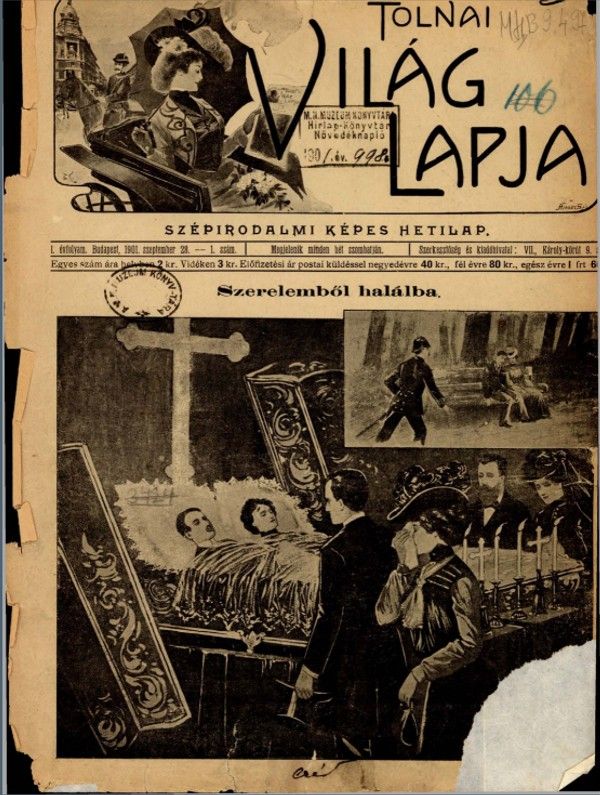
The first issue of the Tolnai Világlapja was published on 28 September 1901 (Source: Tolnai Világlapja, 28 September 1901)
The first issue of the Tolnai Világlapja was published on 28 September 190, at that time on only eight pages. But the scope soon expanded as readers - and advertisers alike - liked it. Of course, some critics said that only the sensation was important to the newspaper. Simon Tolnai, on the other hand, argued that:
"Just as medicine is consumed sweetened, the serious sciences, epoch-making inventions and discoveries can also be made popular if they are showed to the general public in an interesting and readable way."
The content of the paper was constantly expanded, in addition to political, social and criminal articles, reports, scientific, educational materials and literary works were published - among others, the writings of Mór Jókai, Jenő Heltai, Sándor Bródy, Gyula Krúdy and Sándor Márai. The newspaper, due to its favourable price, could be bought by the poorer strata as well.
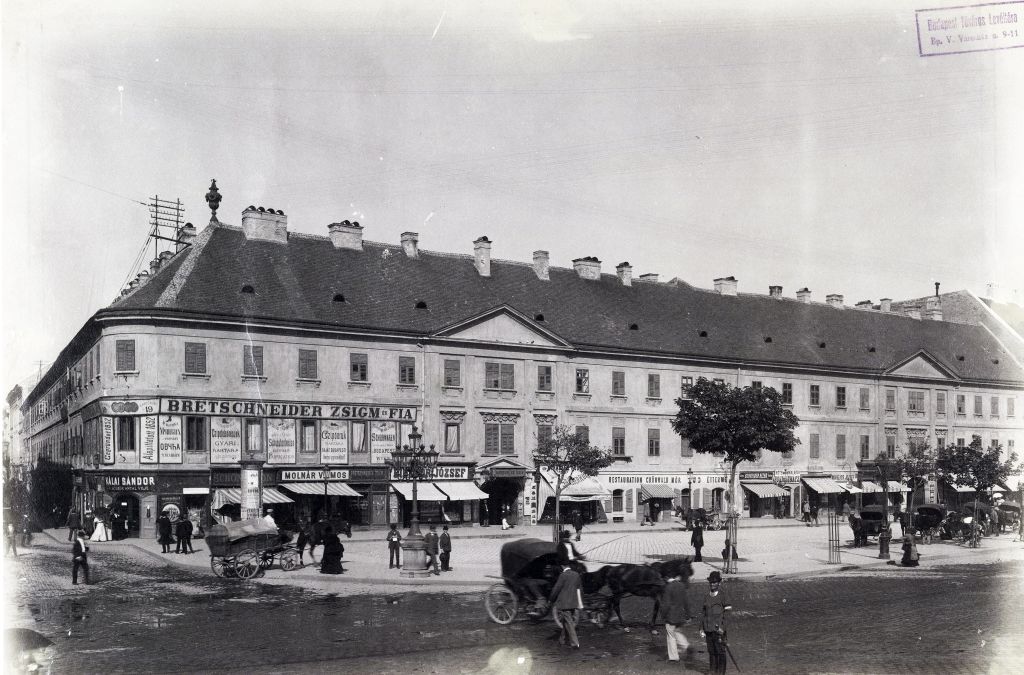 Until 1911, the editorial office of Tolnai Világlapja was located in the Orczy House at 9 Károly Boulevard. György Klösz's photograph of the building was made around 1900 (Source: Fortepan/Budapest Archives, No.: HU.BFL.XV.19.d.1.07.183)
Until 1911, the editorial office of Tolnai Világlapja was located in the Orczy House at 9 Károly Boulevard. György Klösz's photograph of the building was made around 1900 (Source: Fortepan/Budapest Archives, No.: HU.BFL.XV.19.d.1.07.183)
Until 1911, the editorial office operated in the former Orczy House at 9 Károly Boulevard. Simon Tolnai then commissioned Zsigmond Jónás and his brother Dávid to design a modern newspaper palace. He chose Dohány Street as the location. The modern headquarters was handed over in 1913 near the synagogue, under 12-14 Dohány Street. The Tolnai Világlapja wrote about the building on 11 May 1913:
“The five-storey newspaper palace of the Tolnai Világlapja is a real attraction for the capital. The huge building, with its serious simplicity, strength and monumental dimensions, immediately reveals that serious intellectual and industrial work is going on within its walls."
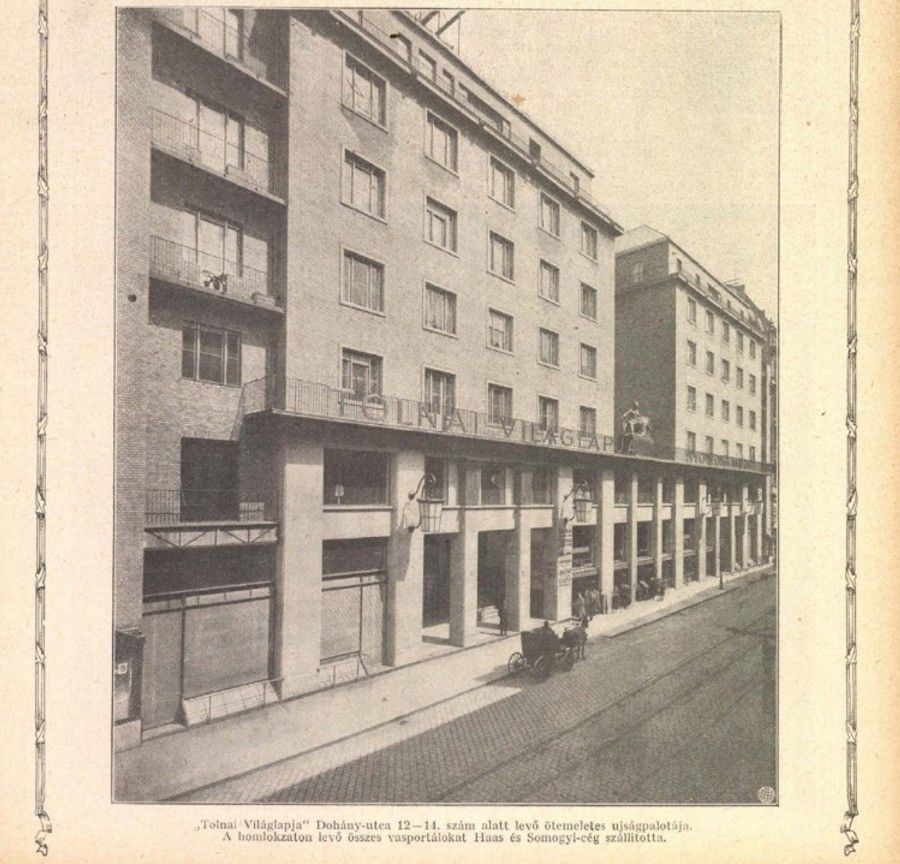 The new headquarters of the publisher and the editorial office were under 12 -14 Dohány Street. It was built according to the plans of Zsigmond Jónás and Dávid Jónás (Source: Tolnai Világlapja, 11 May 1913).
The new headquarters of the publisher and the editorial office were under 12 -14 Dohány Street. It was built according to the plans of Zsigmond Jónás and Dávid Jónás (Source: Tolnai Világlapja, 11 May 1913).
On the facade of the building, between the two protruding parts of the building, there was a statue of Hungária (the goddess of the Hungarians), the work of sculptor Jenő Mester, as she leaned on a globe and held newspapers in her hands. The statue was commissioned by Simon Tolnai and allegedly evoked the features of his wife.
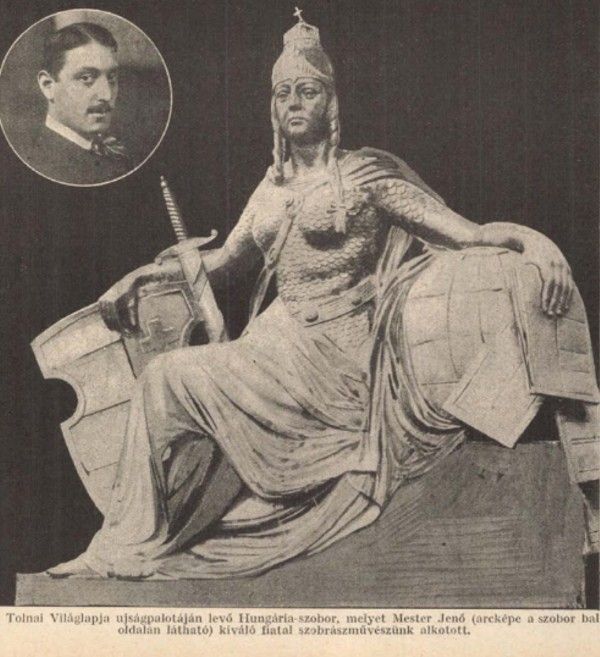
The Hungária statue on the facade of the headquarters was the work of sculptor Jenő Mester (Source: Tolnai Világlapja, 11 May 1913)
In the basement of the five-story building was the printing press, which had its own generator as well. The publishing house's offices were located on the ground floor and mezzanine, and the bookbinding and collecting room was located on the intermediate floor. On the first floor, there were editorial rooms and offices, and on the upper floors, there were apartments and studios.
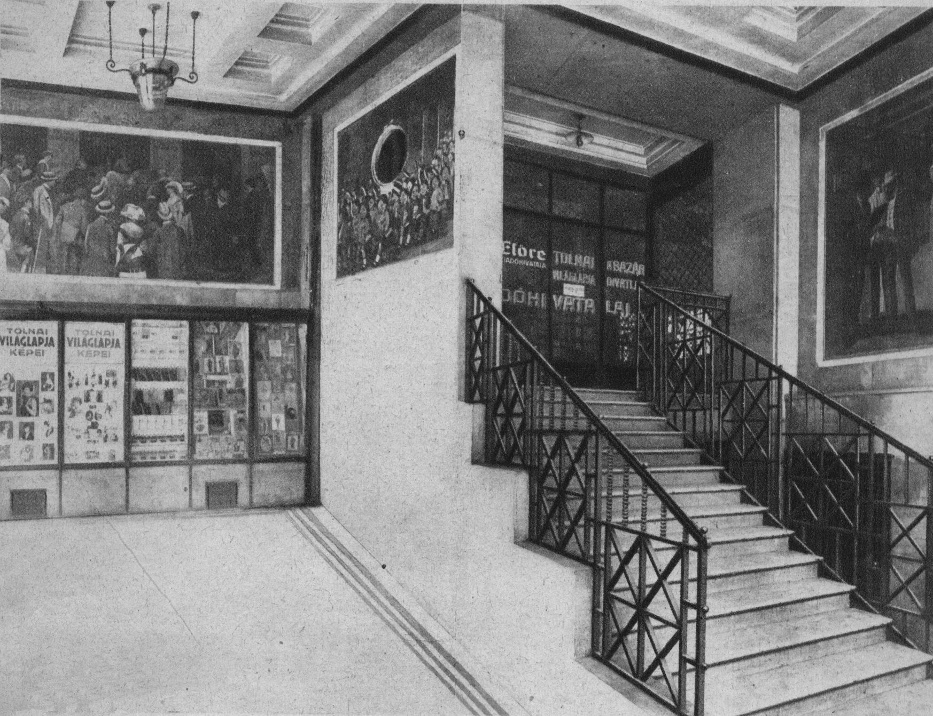 The lobby of the publishing office in Dohány Street (Source: Brochure of Tolnai Printing Institute and Publishing Company; oszk.hu)
The lobby of the publishing office in Dohány Street (Source: Brochure of Tolnai Printing Institute and Publishing Company; oszk.hu)
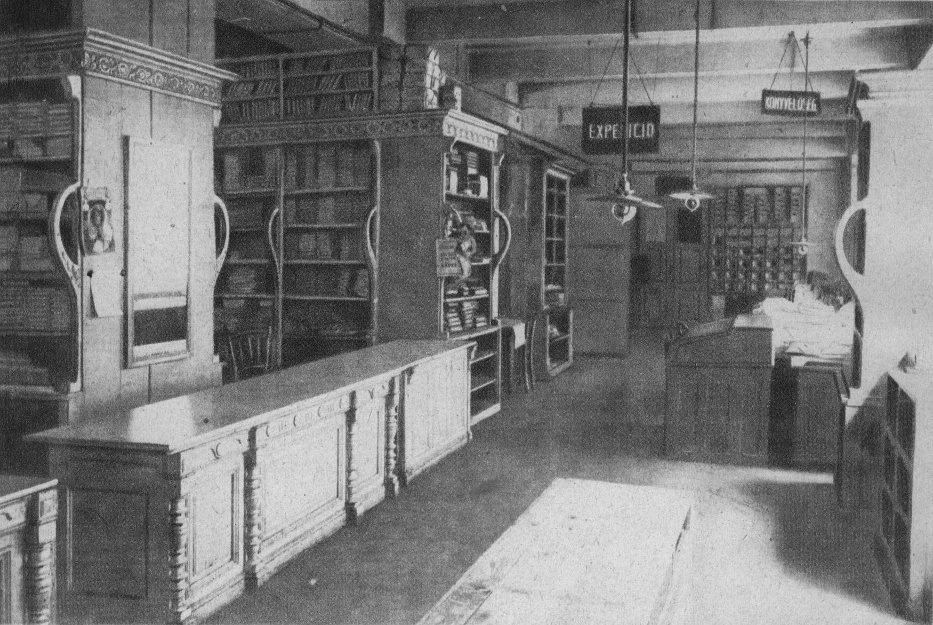 The publishing office (Source: Brochure of Tolnai Printing Institute and Publishing Company; oszk.hu)
The publishing office (Source: Brochure of Tolnai Printing Institute and Publishing Company; oszk.hu)
Additional newspapers were later produced at the headquarters of the press empire: the weekly Bazár and then Párizsi Divat was specifically for women. They also published a theatrical and artistic weekly titled Délibáb, and even a sports magazine at a time. The Tolnai publishing company first released the Tolnai's World History albums, and then the Tolnai World Lexicon.
The number of subscribers was increased, among other things, with gift books, free life and accident insurance: Tolnai Világlapja sold hundreds of thousands of copies. Another novelty was that the publisher paid immediately for the secondary publication, although only half of the standard fee of the primary publication. Jokingly, that is why he was also called Fele Áron (wordplay, meaning 'half the price').
The owner of the paper himself lived in a house at 10 Síp Street, next to the Dohány Street Synagogue, near the headquarters. This building also belonged to the publishing company.
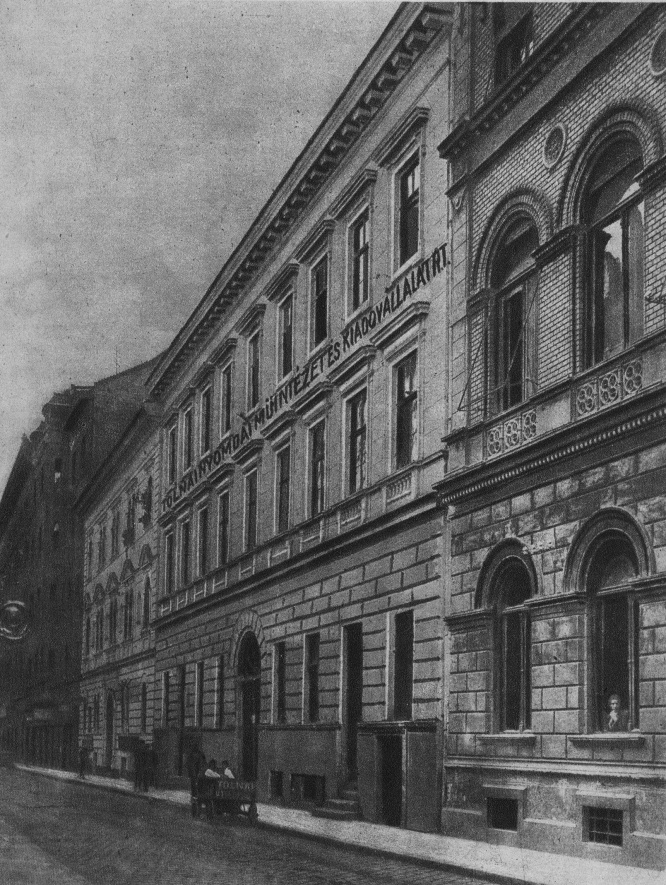
Simon Tolnai lived in the building at 10 Síp Street, the publishing company also operated in this building (Source: Brochure of Tolnai Printing Institute and Publishing Company; oszk.hu)
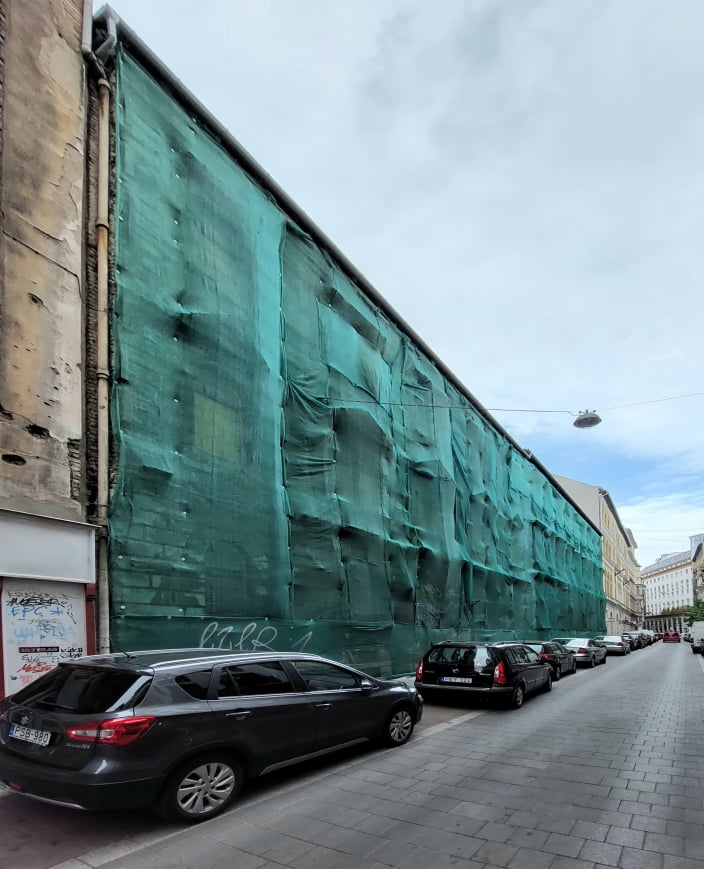
The listed building at 10 Síp Street has been like this for years, they wanted to build flats and passages here in the mid-2000s. According to the latest news, a luxury hotel and wellness centre has been built, which includes the adjacent building at 8 Síp Street and the building at 10 Dohány Street (Photo: Balázs Both/pestbuda.hu)
Interestingly, the backyard of the house on Síp Street was in direct connection with the building at 10 Dohány Street, which was also owned by Simon Tolnai, where the publisher also operated. Tolnai wanted to build a modern office building on the site of the building at 10 Dohány Street as well but the plan did not materialise due to the economic crisis of the 1930s. The passageway feature of 10 Síp Street and 10 Dohány Street was abolished in 1944, the two courtyards were separated, the house on Síp Street was on the territory of the ghetto, the Dohány Street building was outside of that.
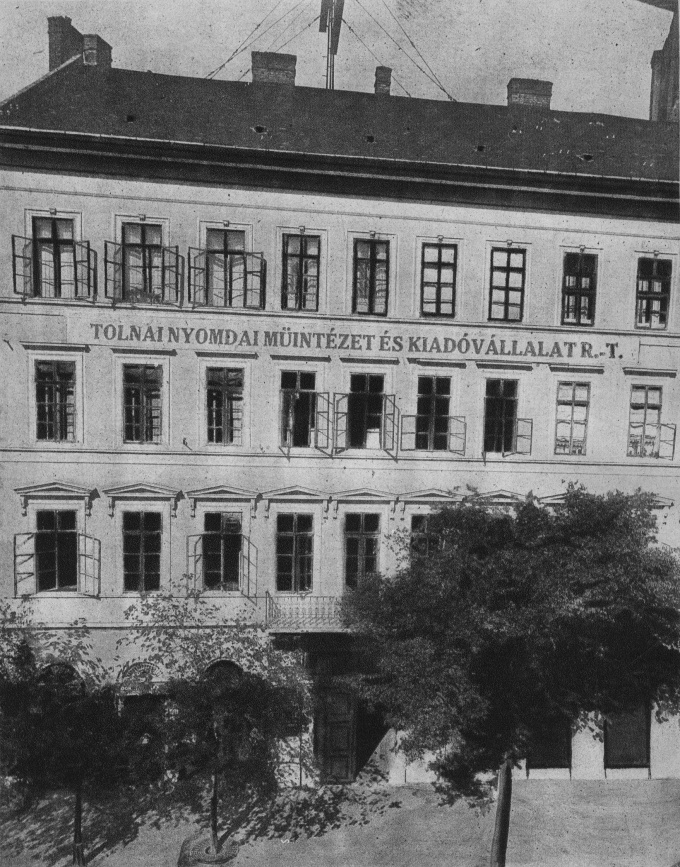
The building at 10 Dohány Street was also part of the press empire (Source: Brochure of Tolnai Printing Institute and Publishing Company; oszk.hu)
When the publisher owner wanted to break away from work, he rested in his villa in Zugló. The building under 12/B Erzsébet Királyné Road is still referred to by the people living in the area as Villa Tolnai, although it was not built by the press magnate.
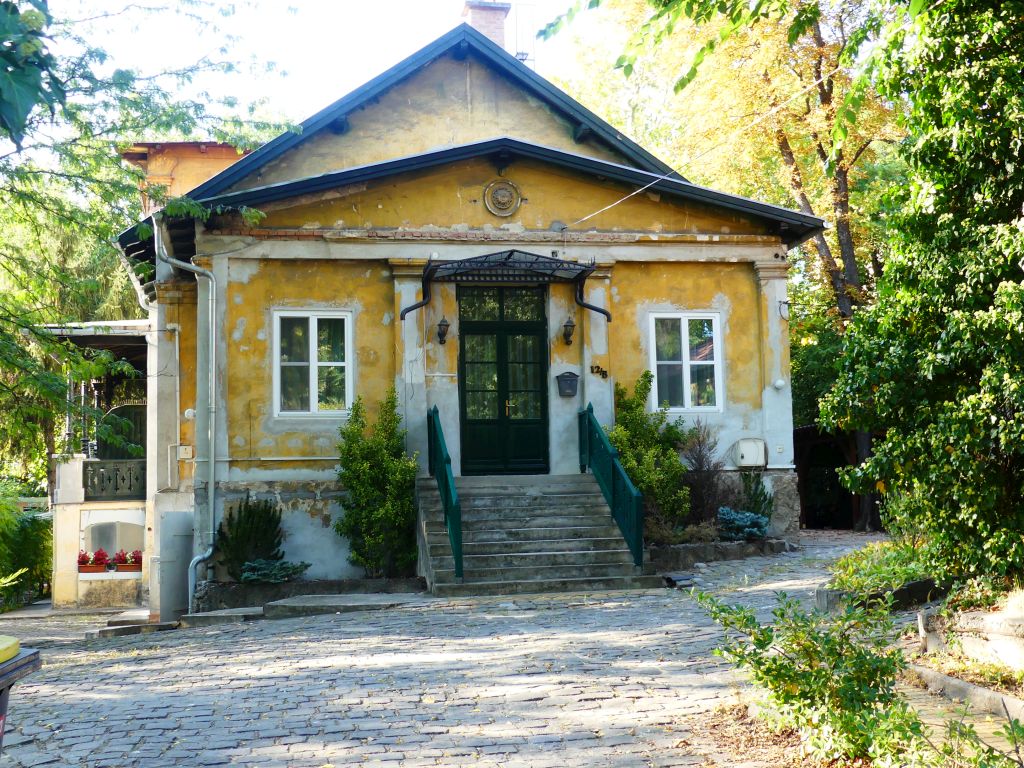 Former villa of Simon Tolnai in Zugló, on Erzsébet Királyné Road. The roof of the privately-owned building was recently renovated (Photo: pestbuda.hu)
Former villa of Simon Tolnai in Zugló, on Erzsébet Királyné Road. The roof of the privately-owned building was recently renovated (Photo: pestbuda.hu)
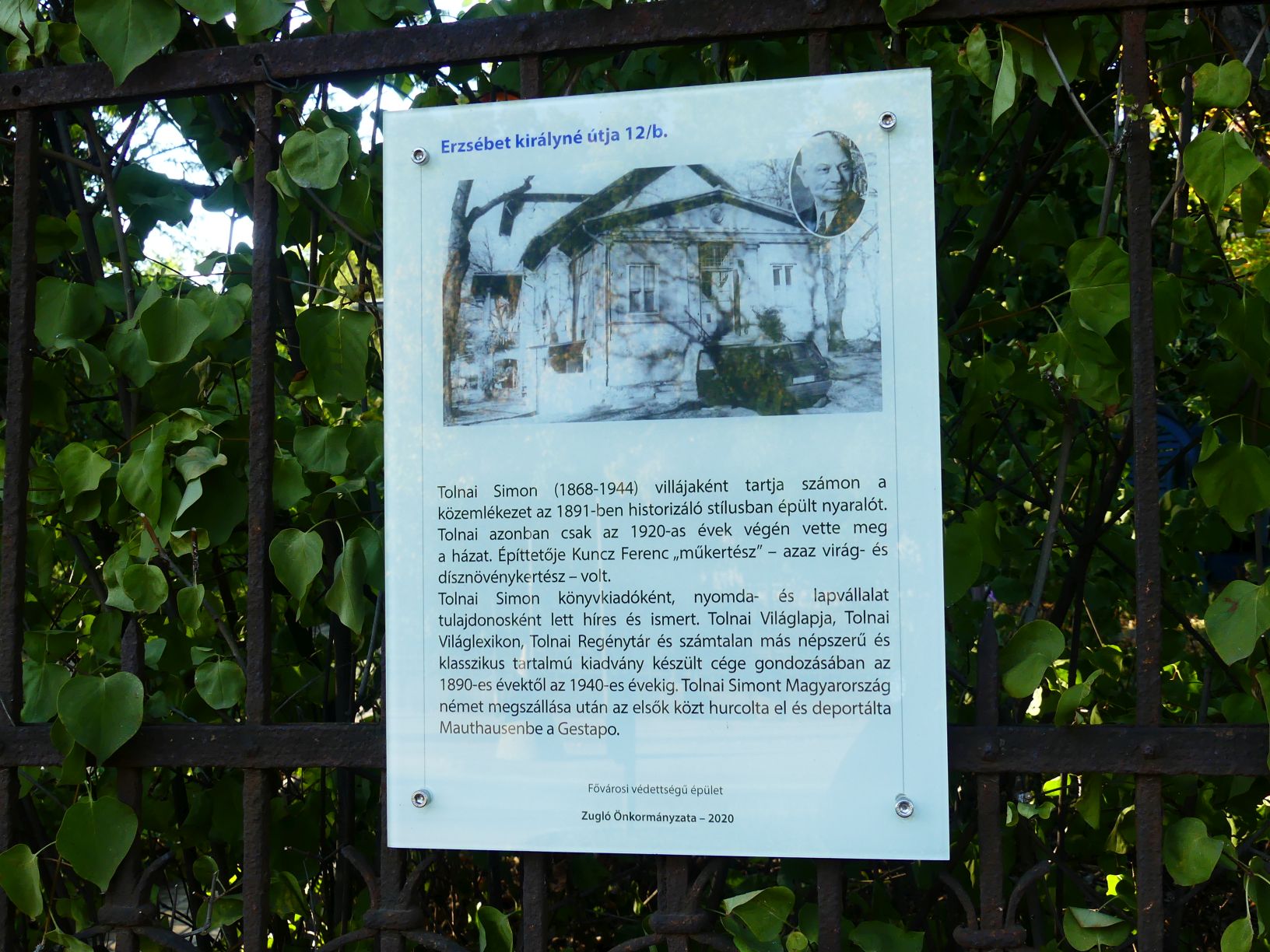 An information board on the fence of the Zugló building reminds of the former famous resident (Photo: pestbuda.hu)
An information board on the fence of the Zugló building reminds of the former famous resident (Photo: pestbuda.hu)
But let us get back to Dohány Street. The majority of the shares of the Tolnai Printing Institute and Publishing Company were transferred to the government in 1941 due to Jewish laws, the publisher continued to operate under the name Forrás, and the weekly was now published only as Világlap. Simon Tolnai was arrested by the Gestapo two days after the German occupation and died in the Mauthausen concentration camp in 1944. Some of the offices of his press palace were also used by Adolf Eichmann during the German occupation.
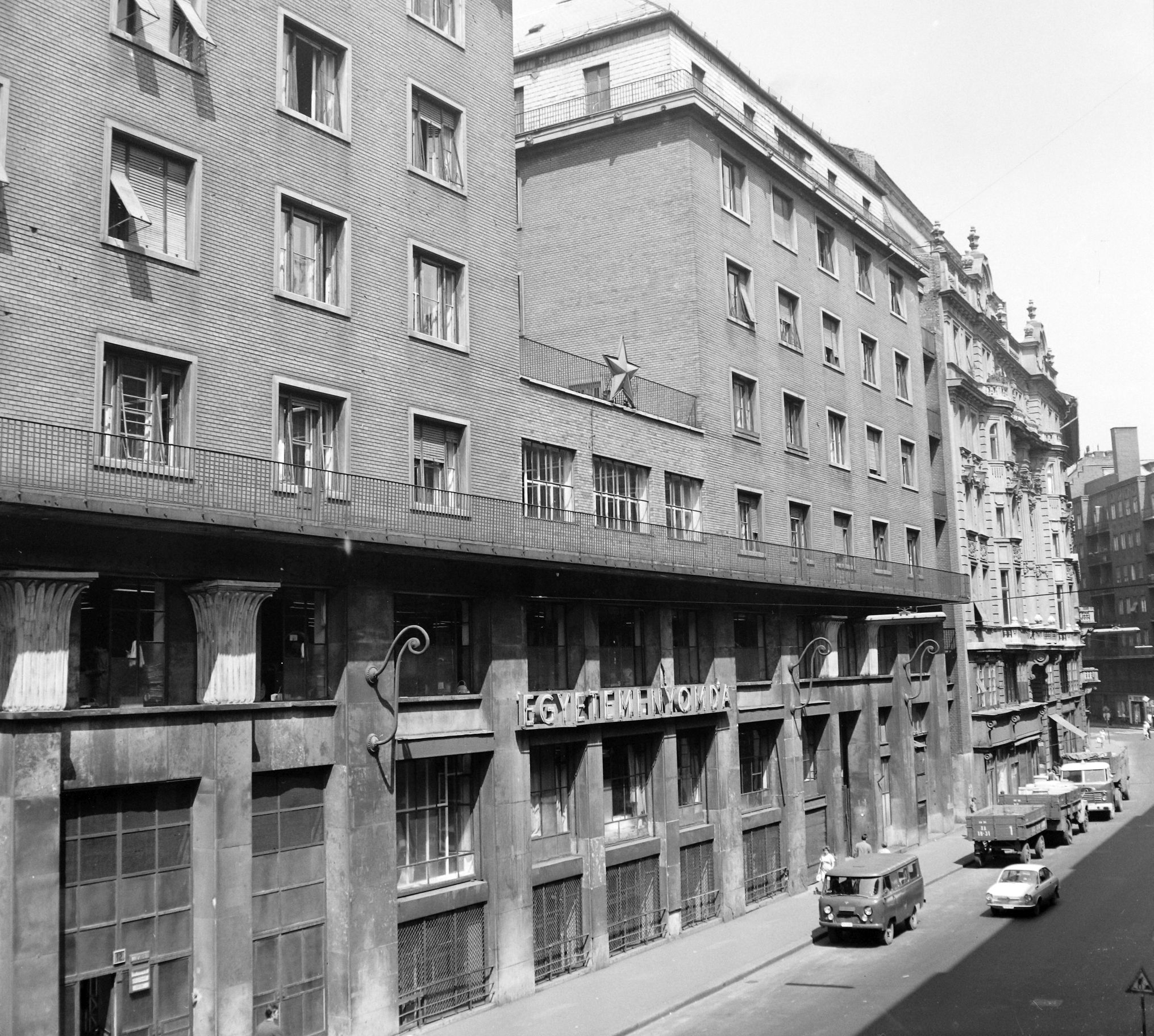 From 1950, the University Press operated in the building under 12-14 Dohány Street. A red star took the place of the Hungária statue on the facade of the building (Source: Fortepan/No.: 97719)
From 1950, the University Press operated in the building under 12-14 Dohány Street. A red star took the place of the Hungária statue on the facade of the building (Source: Fortepan/No.: 97719)
From 1950, the University Press operated in the building under 12-14 Dohány Street. A red star took the place of the Hungária statue on the facade of the building (Source: Fortepan/No.: 97719)
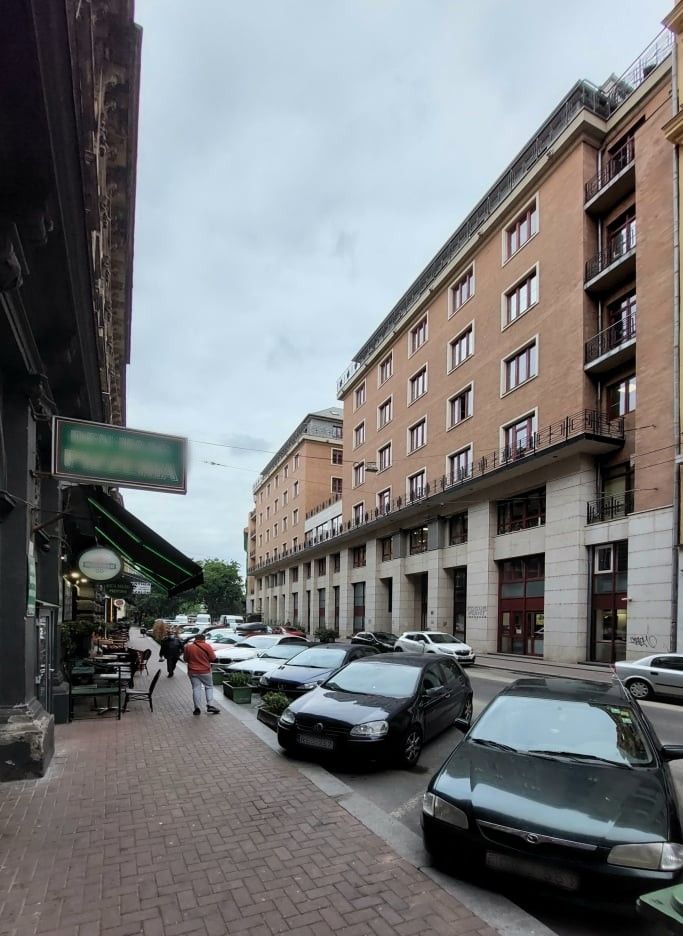
When the University Press was liquidated, the building was purchased by a foreign investor who rebuilt it in 2000 and then completely renovated it in 2006. It currently operates as an office building (Photo: Balázs Both/pestbuda.hu)
Cover photo: The former headquarters of the Tolnai Printing Institute and Publishing Company nowadays under 12-14 Dohány Street (Photo: Balázs Both/pestbuda.hu)

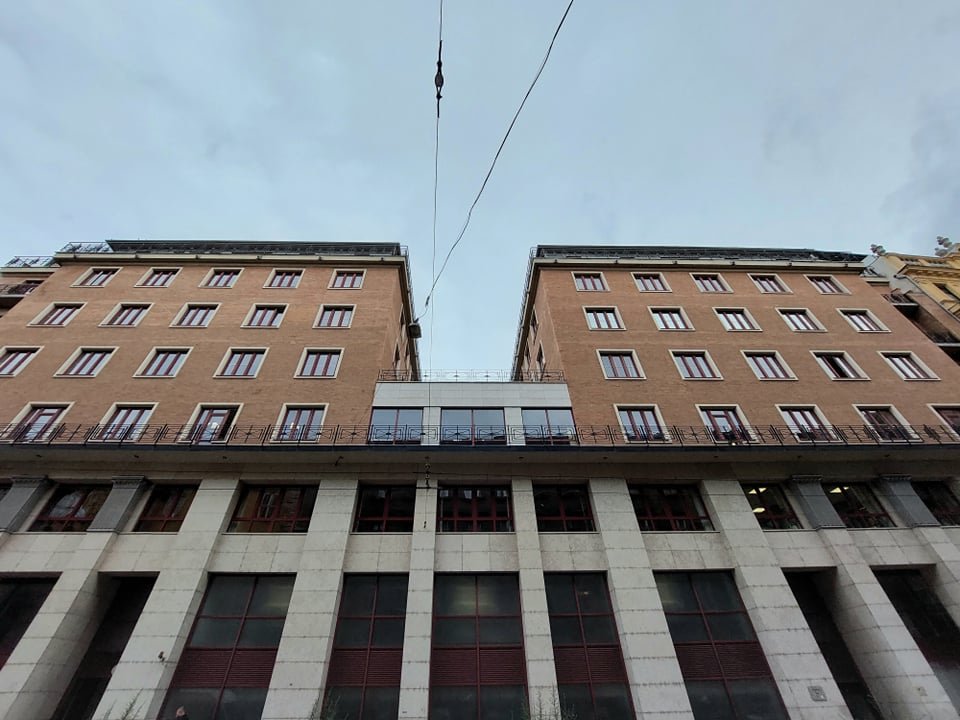


































Hozzászólások
Log in or register to comment!
Login Registration